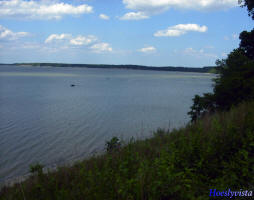 The Final Frontier of Water and Wastewater Treatment: Sludge Management Equipment Market Set to Reach $9.9 Billion by 2017
The Final Frontier of Water and Wastewater Treatment: Sludge Management Equipment Market Set to Reach $9.9 Billion by 2017
A new report from Global Water Intelligence (GWI) investigates the transforming sludge management market. Municipal sludge treatment is on the rise, and attracting a widening portfolio of specialist technologies. More wastewater treatment, tightening regulations and green incentives make it a good, if heavily regional, market. How can companies enter and thrive? GWI’s new report on sludge management showcases opportunities in this growth market.
The wastewater treatment industry is effectively a sludge generation industry. If the wastewater from the world’s urban population were to be collected and treated, the sludge generated would rise from 75 million tonnes in 2012 to 83 million by 2017 - before industrial development is even taken into account. And in one year, enough sludge would be generated to cover an area equivalent to Singapore in a layer 10cm thick.
A new report on sludge management from GWI explains that the increased sludge production volumes are driving the wastewater treatment industry to implement new sludge management processes. GWI explains that municipal sludge treatment is on the agenda due to limited land space, tightening regulations across the globe and health concerns. This will soon consign dumping untreated sludge and landfilling to the past. Safely treating municipal sludge is a big business, worth an estimated $7.3bn in 2012.
The wastewater treatment industry is seeking alternative disposal options that enable them to handle their sludge more safely and cost effectively. The fundamental driver behind sludge management is to treat the sludge in a way that will reduce its volume. The smaller the volume, the lower the costs associated with transportation and disposal. Wastewater treatment plant (WWTP) operators must also consider the large energy input needed to treat sludge, and for this reason, high energy costs and subsidies for renewable energy are likely to make energy recovery options increasingly attractive going forward.
To meet these needs, WWTP operators will inevitably have to increase their investments in sludge stabilisation technologies, particularly anaerobic digestion (AD). AD both decreases the volume and increases the quality of the treated sludge. As a further kicker, the biogas produced as a by-product of AD can partially offset the cost of the energy needed to run the plant.
The global municipal sludge equipment market is set to grow by 5.7% by 2017 – from $7.1 billion in 2011 to $9.9 billion in 2017. The strongest growth will be in anaerobic digestion, which is set to reach a value of $1.3 billion by 2017. Thickening and dewatering technologies will remain the largest investment area, reaching a value of $3.1 billion in 2017.
This growth is healthier than the water and wastewater markets due to the contributions of two distinct ‘submarkets’. National programmes in China and Brazil to increase the number of people who receive wastewater treatment services will significantly increase the volumes of sludge produced. In these countries, the biggest opportunities for investment will be in fundamental sludge treatment technologies, including thickening, dewatering and basic stabilisation. Stricter environmental regulations mean that operators will also have to start treating the sludge produced by existing treatment plants.
Where the sludge generated from wastewater treatment plants is already thickened, dewatered and stabilised – as is the case in many developed nations – the appetite is for more advanced technologies. Biogas generation and energy recovery are increasing in prominence, especially in the EU where the renewable energy incentives can be considerable.
Despite the slowdown caused by pressure on public sector spending, Western Europe (EU-15) will remain the largest single market for sludge management equipment. The markets with the most rapid growth will be those countries which are investing heavily in increasing wastewater treatment volumes, using more advanced wastewater treatment technologies, and increasing sludge management capacity accordingly (see chart). These include Brazil (14.0% CAGR), China (8.5% CAGR) and the 12 states that have recently joined the European Union (EU-12; 7.0% CAGR).
Anaerobic digestion is showing the strongest growth, with a value of $1.3 billion in 2017 (9.3% CAGR). Thickening and dewatering equipment will remain the largest investment area, reaching a value of $3.1 billion in 2017 (see chart).
Increased investment in sludge management is presenting opportunities for water treatment suppliers to expand into these growing markets – but market access is not without challenges. Generally, the sludge industry can be conservative in its approach to new technologies, requiring extensive testing and piloting procedures before adoption. GWI explains that the sludge treatment market is innately conservative in its approach to new technologies. However, despite the traditional inertia of the market, a growing openness to new approaches is being witnessed. Tightening regulations and the ability to solve a particular problem are the main forces behind the openness of the markets.
Individual markets with growth potential like Brazil and China give preference to local companies, and even an understanding of the local market characteristic does not guarantee success. In the US market, the power wielded by engineering consultants who pick and choose technology suppliers based on their knowledge of the technology as well as its reliability and cost, should not be underestimated. The conservative view taken by some consultants can be limiting, as they do not like to upset the status quo regarding technology adoptions
Reducing the volume of sludge produced increases energy use and capital expenditure. This provides an incentive for operators to invest in more efficient technologies, and to extract additional value from treated sludge.
Advanced treatment technologies such as AD cannot be used to process raw sludge. Operators will thus need to invest in reliable methods to ensure that the treatment process is not disrupted by contaminants in the sludge. When a pretreatment phase is combined with appropriate advanced treatment, the overall efficiency of the treatment process is increased, resulting in lower sludge volumes and lower operating costs.
Energy issues drive the market, and so reducing operating costs through energy efficiency is an attractive prospect, as is energy recovery through biogas generation. The key opportunity in energy recovery is capturing and using the biogas generated by anaerobic digestion. This is especially the case with the advent of advanced AD approaches which increase the quantity of biogas that is generated. The introduction of renewable energy incentives in a number of countries is making the energy opportunity all the more compelling.
Plant operators wishing to reduce their dependence on fossil fuels are increasingly likely to take advantage of the potential to produce alternative feedstock during the sludge treatment process. These fuels can either be sold on, or used to make the plant more energy self-sufficient. The fuel compounds which can be produced include biogas, syngas (a synthetic mixture of carbon monoxide and hydrogen produced by gasification), bio-oil, and biochar (a high-carbon solid).
Sludge is no longer viewed simply as a waste stream, but as a saleable product that can provide an additional revenue stream. Treated sludge is already sold to farmers for use as a fertiliser, and has been used to improve soil conditions at degraded mine sites and on forestry land.
Nutrient-rich sludge streams are ideal media for recovering phosphorus and nitrogen, which can also be extracted from sludge return liquid and incinerated sludge ash. The reclamation of phosphorus from sludge will become increasingly attractive as phosphorus mine deposits are depleted.
Sludge and sludge ash can also be used as raw materials in the manufacture of construction products such as cement, mine filler and building bricks. The main opportunity in this market segment is the ability to reduce disposal costs while showcasing a green approach to sludge management to the public.
In 294 pages, Sludge Management: Opportunities in growing volumes, disposal restrictions and energy provides a full analysis of the sludge industry, covering regulatory frameworks, the established and emerging technologies, management routes, disposal options and opportunities. Depicted in many graphs and charts, GWI provides country and region market analyses and forecasting - evaluating market potential by region, capital expenditure on sludge management and regional wastewater production estimates.
The report was released on 6th December 2012 and costs £2,000 / $3,500. To order the report or for more information, visit http://www.globalwaterintel.com/sludge-management or email Chantal Marchesi at cmarchesi(at)globalwaterintel(dot)com.
| Contact information | n/a |
|---|---|
| News type | Inbrief |
| File link |
http://www.globalwaterintel.com/sludge-management |
| Source of information | PRWEB via Global Water Intelligence |
| Keyword(s) | Wastewater Treatment, Sludge Management |
| Subject(s) | ANALYSIS AND TESTS , CHARACTERISTICAL PARAMETERS OF WATERS AND SLUDGES , DRINKING WATER , DRINKING WATER AND SANITATION : COMMON PROCESSES OF PURIFICATION AND TREATMENT , ENERGY , HEALTH - HYGIENE - PATHOGENIC MICROORGANISM , HYDRAULICS - HYDROLOGY , INDUSTRY , INFRASTRUCTURES , MEASUREMENTS AND INSTRUMENTATION , NATURAL MEDIUM , PREVENTION AND NUISANCES POLLUTION , SANITATION -STRICT PURIFICATION PROCESSES , SLUDGES , WATER QUALITY |
| Relation | http://www.globalwaterintel.com/accounts/register_purchase/?next=/publications-guide/market-intelligence-reports/sludge-management/buy/ |
| Geographical coverage | n/a |
| News date | 17/01/2013 |
| Working language(s) | ENGLISH |
 you are not logged in
you are not logged in





